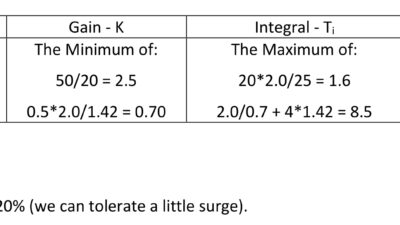For engineers who must learn project management skills on the fly, easy-to-use tools are the name of the game.
Many design engineers don’t set out to be project managers. Somewhere along the line, their superior technical skills give management the idea they are qualified for a whole different task: leading a team.
Tapped on the shoulder, sometimes out of the blue, to manage projects under today’s tight time-to-market schedules, many design engineers have little time to master complex project management software.
A recent survey of Design News readers showed 39 percent of project managers weren’t using any type of dedicated project management software at all. A similar percentage used desktop software linking only members of their immediate team, rather than sophisticated enterprise-wide systems that tie into central company functions.
Even Microsoft Project, the most widespread PM tool with some 20 million users worldwide, includes features that many engineers either don’t use or find too complex. “There are many companies that don’t need the complexity of Microsoft Project, and that’s who we’re targeting,” says Steve Schapansky, director of business development for Pelago, Santa Barbara, CA. The software company has developed a task- and time-management package called Intervals, which is becoming increasingly popular with companies that need to ensure staff are working on the right tasks at the right time.
Making Friends with Time
One project manager who has embraced Intervals as a time-management tool is mechanical engineer Doug Corbin of Automated Packaging Systems, a Cleveland-area manufacturer of machines for bagging and sealing applications. More than 25,000 of its systems have been sold worldwide. A former project manager at Keithley Instruments, Corbin’s major marching orders upon joining APS last year were to install an effective system for managing the time of the firm’s 25 R&D engineers.
It’s not an easy task. The company’s engineers at any one time work on two to five projects involving new or substantially redesigned systems. Add to that workload several “fires” that always need to be addressed, such as breaking away from a new design to help solve an application issue for an important customer.
“Our former time management system was tied into our MRP system, but it just didn’t give us the reporting and control we needed,” says Corbin. So he started looking at other alternatives, which essentially broke down into two categories. There were distributed products, where you simply buy a software package and load it onto your computer or internal. And then there are hosted systems, where you pay for access to the software on the provider’s online site.
Corbin opted for Intervals, a hosted site that would stand alone and offer good reporting, along with a simple, easy-to-use interface. “It gave us something that engineering could control without the typical IT and accounting entanglements,” says Corbin.
The targeted nature of Intervals also allowed him to capture the time consumed by unexpected assignments that interrupt an engineer’s major projects. “Without such a system, it is easy to forget how these interruptions can burn time,” says Corbin.
With Intervals, Corbin and the engineer director create projects that fall under four internal “clients” headings: new product development, existing product support, manufacturing support and corporate time (meetings, vacations, sick days and the like). They assign tasks under these projects to specific team members and prioritize tasks by level of importance or severity. It is then up to individual engineers to provide updates to the system, using their own “My Page” on Intervals. Engineers can switch an automatic timer function on and off in Intervals to record their daily tasks.
The consolidated reports Intervals generates from these individual entries help managers determine if teams are spending enough time on high-priority projects. They also give Corbin the hard data he needs to go to management on staffing decisions.
All this costs the APS team just $100 a month in hosted time, versus $500 to $1,000 a seat for traditional project management packages like Microsoft Project. “Intervals greatly reduces the time engineers need to spend tracking their time,” says Corbin. And that helps him meet one of his major objectives as a project manager: finding new processes that will free engineers to be more creative and productive. His next target: establishing better and more streamlined systems for tracking and updating documents.
Non-Stop Model Making
Another project manager who needed a targeted tool to cope with an unrelenting schedule was Dan Patterson, who supervises the design fabrication department for Honda R&D in Torrance, CA. Patterson, who started out as a clay modeler for Honda 18 years ago, heads an operation that fabricates a steady stream of full-scale models that help bring designers’ concepts to life.
“We’re like a mini factory, with milling, welding, fiberglass application, rapid prototyping and exterior and interior painting,” says Patterson.
Such tasks must be tracked over the eight to nine weeks needed to complete a model, and there can be several models under construction at any given time, each at a different stage. Then there’s the deadline pressure of having models ready for key presentations to Honda management.
Patterson’s solution for keeping a handle on it all: FastTrack Schedule. Developed by Virginia-based AEC Software and now in its ninth major version, the $350 package caters to users who shy away from full-blown project management software. Among its core benefits:
Displaying project information, such as schedules, in Gantt charts
Establishing links or dependencies among tacks
Presenting schedules in critical path modes
Interoperability across Windows and MAC platforms, a key concern for many design teams
eed fast with a quick and nimble system.”
In Patterson’s case, it was a matter of being a modeler one day, and the next having to assume a coordinator’s role over model production. “People often don’t have the luxury of getting project management training,” says Patterson. “You must figure it out as you go along.”
Very soon after he assumed coordinator duties several years ago, he adopted FastTrack Schedule as a way to plan projects in advance, in effect “water-falling” a series of models. Now, as department manager, he works with two coordinators to use the software not only for scheduling internal operations but to track outside vendors as well.
The department coordinators set priorities and maintain the master FastTrack schedule. Individual team members view this information on the department’s Intranet and provide regular updates. The software’s manpower-tracking feature also helps managers predict workloads, which helps the model fabrication shop secure more realistic lead times from management for work completion.
But perhaps most important, says Patterson, is FastTrack’s role in help his team cope with the fickle world of design. Says Patterson: Design is all about change, and we need a system that gives us maximum flexibility in scheduling.”
Don’t Forget the Soft Skills
Over the years Neal Whitten has learned a few things about project management. In his 23-year career with IBM, the electrical engineer led numerous projects, many of them in software development.
Now, as head of his own Georgia-based consulting, Whitten advises companies on project management and has written several books on the topic. His latest: Let’s Talk! More No-Nonsense Advice for Project Success. Among his conclusions: “Most people who are leading projects are not very good at it.”
The reason, more often than not, says Whitten, is that these managers fall short not on technical processes but on the “soft skills” vital to project success. “All of a sudden you as a project manager find yourself in a room with 12 people who are whining or blaming others,” notes Whitten. “And that is when real leadership is needed.”
What are some of the essential qualities that effective project leaders need? Among those that Whitten cites:
*Boldness and courage to conquer internal fears and “make things happen.”*An ability to deal with confrontation and disputes within teams.*Strong communications skills throughout the project’s life.*Personal integrity that breeds trust in team members– without the constant need for approval.
Moreover, says Whitten, good project managers project an attitude of tolerance. “Don’t bring your ego to work,” he advises. “It isn’t about you; it’s about the team.”
“Soft skills” may not come easily to many engineers, but Whitten contends that, like leadership, they can be learned.



